For a crucial conservation effort, the decades have made the difference
One farm’s forests show how planting trees has come into its own
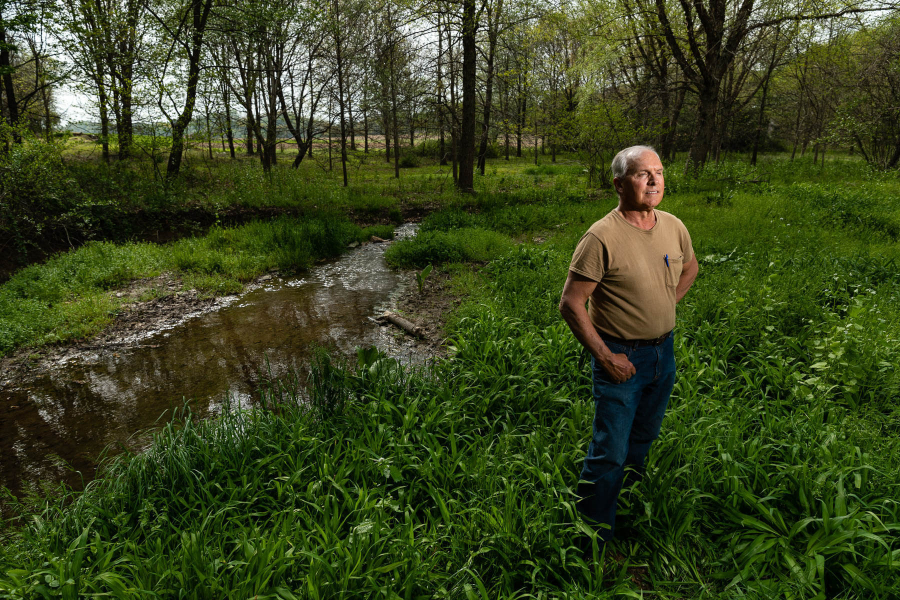
Of the many conservation practices that farmers can adopt, planting trees along streams is one of the most effective ways to keep soil in place and advance the recovery of local waters as well as the Chesapeake Bay. But to be effective, fragile saplings have to live long enough to become a forest that shades the water and soaks up nutrient pollution with its roots. Keeping trees alive is not as simple as it may seem, and it’s only in recent years that the practice of using them to buffer waterways has really matured.
One farmer in Lancaster County, Pennsylvania, has experienced the evolution firsthand, and can recount two decades of trial and error that have led to progress on his family’s 200 acres.
Roger Rohrer, 69, works on hilly cropland in the borough of Strasburg, that his family has farmed since 1893. Nowadays, the poultry and crop operation fall to Rohrer’s two sons, Todd and Mark, while Rohrer assists and maintains the farm’s riparian forest buffers, plots of switchgrass and other conservation practices supported by federal and state programs.
“I’m just a hired man,” joked Rohrer, touring his farm in an all-terrain vehicle on a late April afternoon.
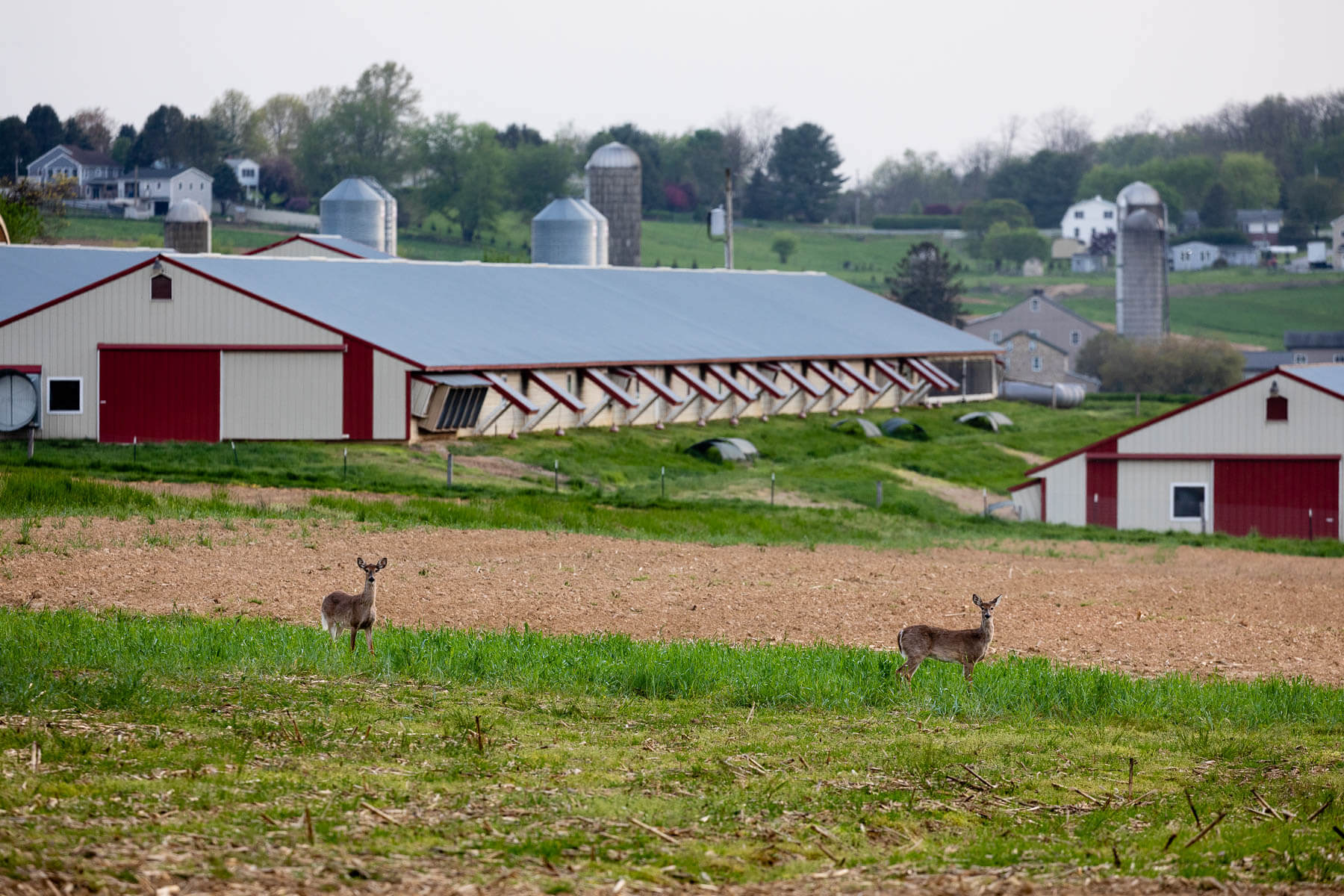
Rohrer estimates that only about 140 acres of his cropland is actually farmed, a result of sandy soils and steep slopes that make parts of the farm less productive. In some parts of the farm, Rohrer earns twice as much in rental payments for taking acres out of crop production and enrolling them in the U.S. Department of Agriculture’s Conservation Reserve Enhancement Program (CREP). Participating in the programs is a “no-brainer” for Rohrer. And as avid hunters, Rohrer and his family see the appeal of having white-tailed deer and wild turkey supported by his forest buffers and plots of warm-season switchgrass.
“I don’t understand what the big deal is about not farming every tillable acre that you’ve got,” Rohrer said.
Rohrer’s earliest foray into CREP forest buffers was when he enrolled 4.5 acres in the program in 2000, planting 750 trees along an unnamed stream flowing through the farm.
Today, Rohrer’s farm is a picture of success, garnering him recognition from the Chesapeake Bay Program as a Chesapeake Forest Champion in 2019. But for several years after that first buffer was planted, there was little to celebrate.
“I would say mortality was 100%,” Rohrer said.
In those early days of the program, some of the requirements ran counter to what trees need to survive. At that time, overgrown vegetation in a buffer could not be sprayed with targeted applications of herbicide or mowed. As a result, dense weed growth outcompeted young trees and tall grasses provided ideal habitat for voles that can girdle tender tree trunks and tunnel through their roots.
“And there were so many of these projects, it became kind of an eyesore,” Rohrer said. “And then people kind of got sour about it.”
For 10 years, Rohrer said his buffer was nothing but a “bad billboard” for that type of conservation practice. But he remained motivated.
“The fact that we had a lot of work to do didn’t poison me from not wanting to keep going,” Rohrer said. “Because I saw the results and the benefits from it, even though it was very difficult to get established.”
Lessons learned
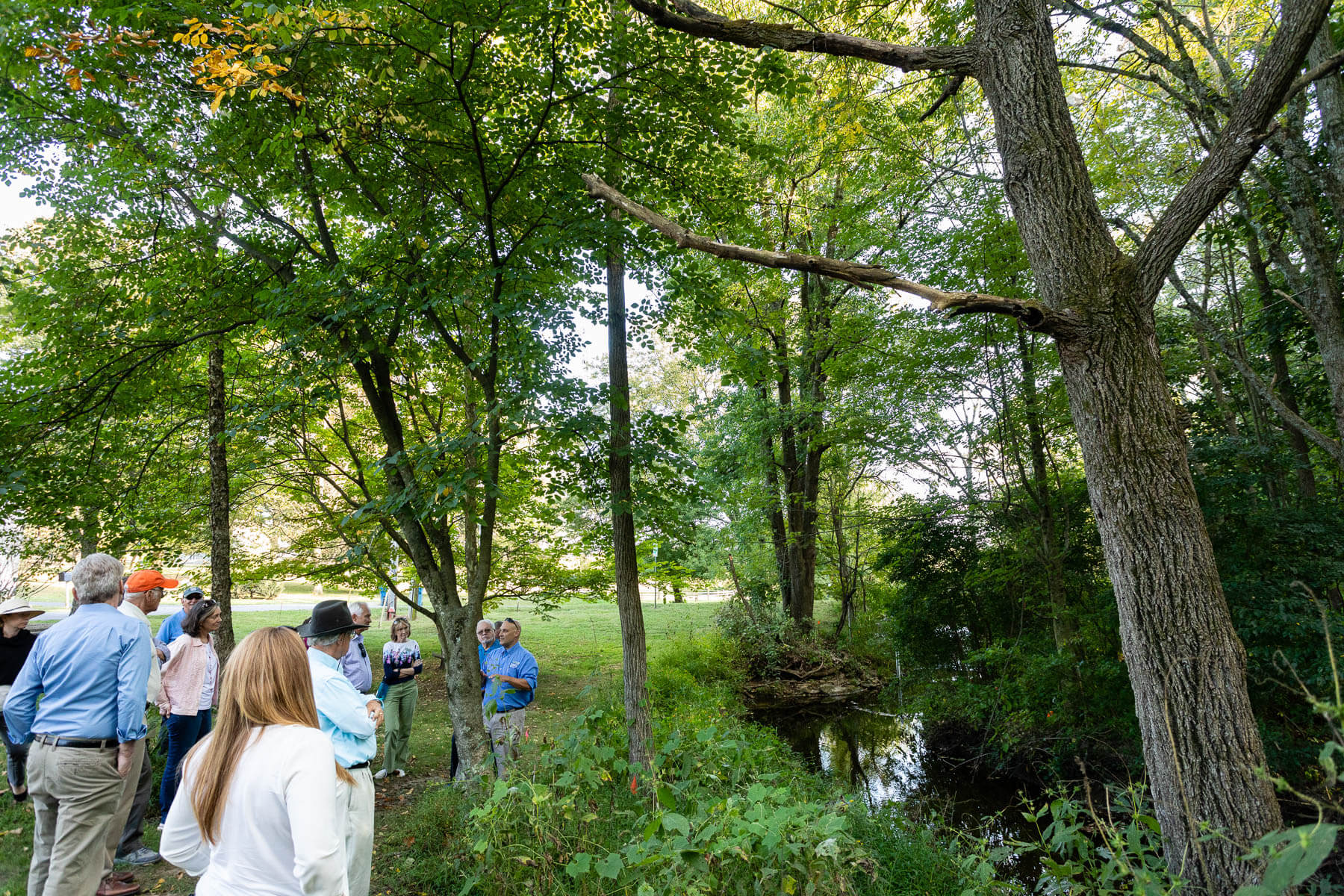
Sally Claggett, who joined the Chesapeake Bay Program in 2002, serves as program coordinator with the U.S. Forest Service and coordinates the Bay Program’s Forestry Workgroup. She has seen states across the watershed overcome a steep learning curve when it came to establishing forest buffers.
“I really think Stroud [Water Research Center] had the biggest impact early on because they were seeing a lot of these failures,” Claggett said. “And it was happening all over the watershed.”
Claggett credits the experts at Stroud for advancing best practices for establishing forest buffers. Stroud ramped up outreach and buffer training in the mid-2000s, helping to spread a wealth of research and knowledge about planning, planting, maintenance and cost-savings.
Maintenance has proven especially critical to getting buffers established more consistently. Managers have adapted their program requirements in order to make sure that projects include adequate support for those crucial early years, when young trees are so vulnerable. And dedicated programs have arisen to train more workers to provide buffer maintenance.
Accordingly, as a key part of the emphasis on maintenance, views on mowing have flipped from prohibiting the practice to encouraging it. It’s now understood that mowing between trees is necessary until a buffer reaches canopy closure—when the foliage can shade out invasive species growing in the understory. But previously, mowing was avoided to protect nesting birds. Today the benefits of an early successional forest are considered to be worth the tradeoff of preventing nesting for a few years.
“There were all these little wrinkles and rules that had to be sorted out, and people had to understand that trees were different,” Claggett said. “It was all going to pay off."
Tree tubes were “a whole learning process in and of itself” according to Claggett. For example, experts eventually learned that switching from a standard four-foot tube to a larger, five-foot-tall tube in order to protect against white-tailed deer could mean the difference between life and death for a tree.
“The tree tube is really beneficial in that it acts as a greenhouse, and the plants grow a lot faster in the tree tube,” Claggett said.
Slow and steady growth
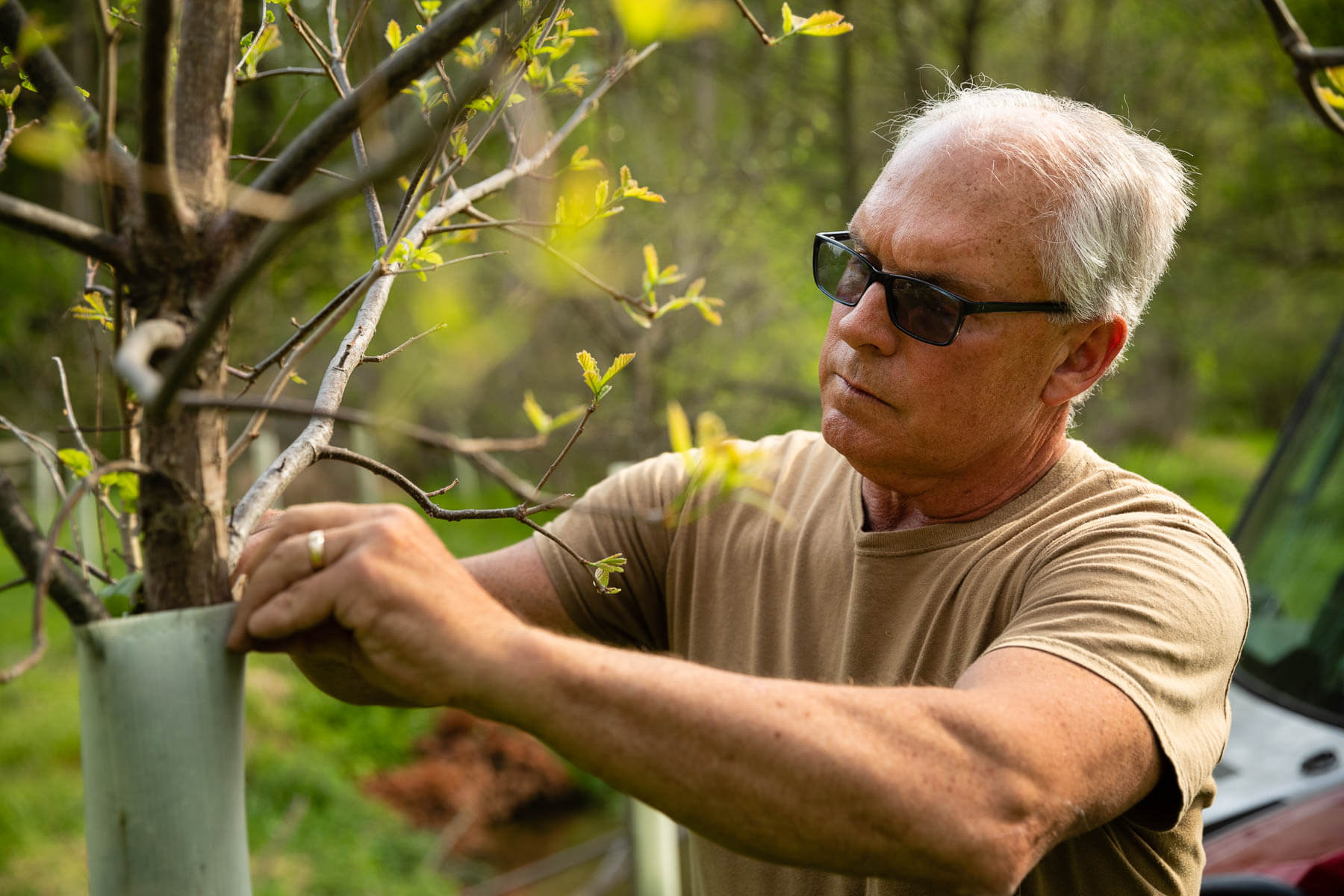

Some Stroud staff are still regular visitors to Rohrer’s farm, and after a few shaky years, his 20-year-old buffer now stands tall with mature trees.
“We’re really starting to get some traction I believe, on these buffers,” Rohrer said. “When I did it, there was no support in those first three or four years. Now there’s contractors that will do [the maintenance] I do for three or four years to make sure the establishment period is covered.”
Black willow trees appeared on their own, sprouting from the soft, wet soil. On a spring day dogwood flowers hang over the winding stream, which reaches Beaver Creek, a tributary that eventually feeds into the Susquehanna River.
“You see how it’s getting wider and shallower?” Rohrer asked, pointing out how it takes 900 yards of winding stream length to cross just 300 yards of land. “[The buffer] is slowing the water up, rather than just cutting and making a deep path.”
Rohrer credits the farm’s buffers, terraces and grass waterways, as well as its no-till and cover cropping practices, with helping the farm weather extreme storms, which Rohrer has observed are becoming more common.
“I can show you that I’m not contaminating streams even with bad storms,” Rohrer said.
Rohrer planted another buffer ten years ago on one side of Little Beaver Creek, downstream from the first buffer. Several years later, he planted the other side of the creek in order to stop erosion from eating away at a curving section, with the last 100 trees going into the ground three years ago. Short grass grows between the buffer’s straight rows of plastic tree tubes, and the buffer includes live stakes—sections of willow and dogwood branches that sprout roots after being plunged straight into the muddy streambanks.
Rohrer estimates that mortality on his youngest buffer was just 5%—the reverse image of his first effort and a testament to lessons learned in the past 20 years. The trees that have died have mostly fallen victim to buck rubs—the gashes made by male deer coming through and rubbing their antlers against the bark. It’s “a blessing and a curse” for the avid hunter, who is willing to put up with the minor losses.
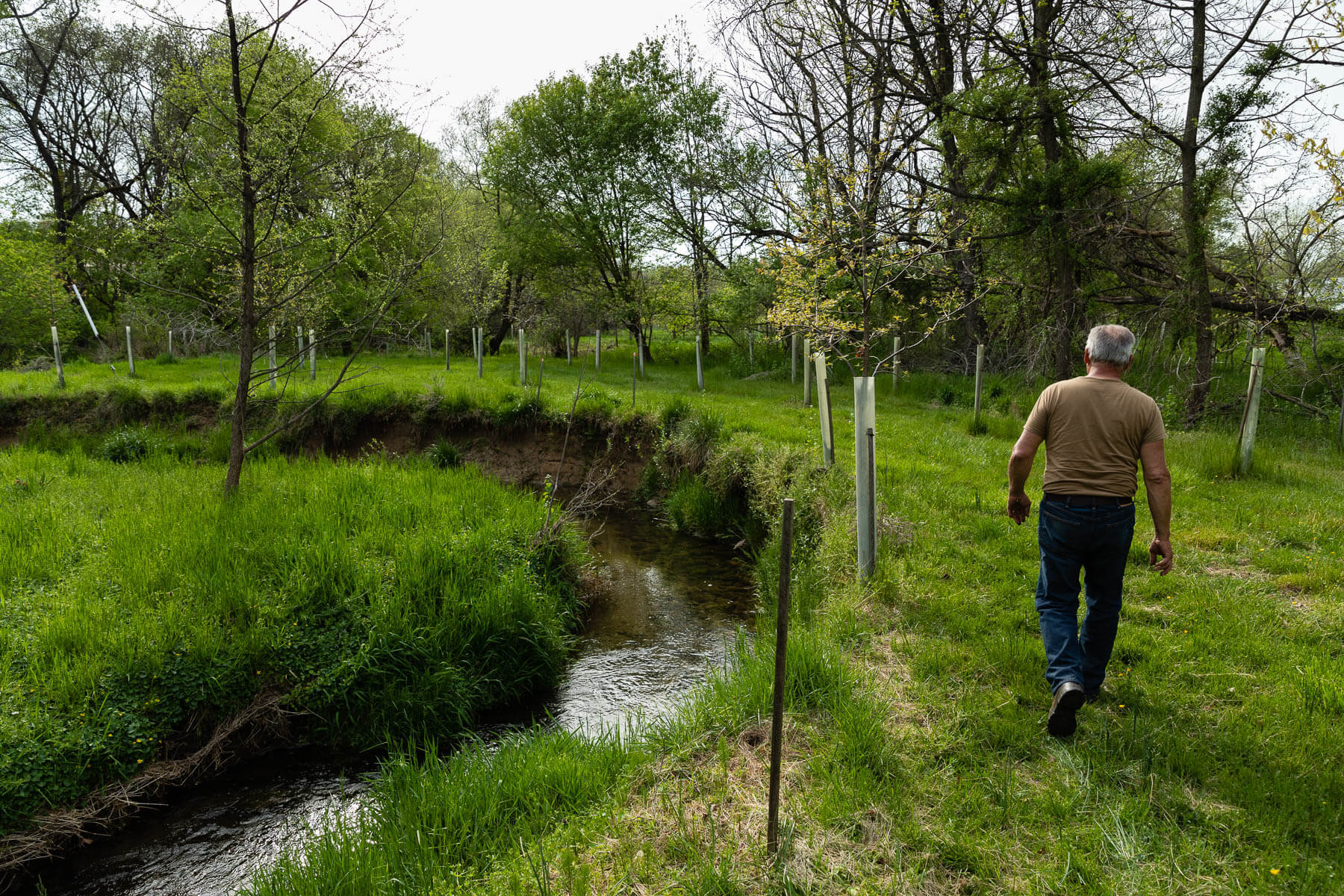
A view of success
When Rohrer describes the progress and challenges that he has experienced, he often speaks with a view of both the farm’s distant past and future. In 50 years, for example, he knows the soil of his 20-year-old buffer will be even softer, the stream even shallower and more winding
And as a member of the fourth generation of his family to work on the farm, he readily volunteers that it was his own ancestors who sent their sediment downstream in the first place, piling up four or five inches deep on his creek and joining hundreds of millions of tons that have flowed through the Susquehanna River to the Chesapeake Bay.
“It didn’t come from me, in the last year, but it came from this farm,” Rohrer laughed. “For 200 years straight, it came from this farm.”
Rohrer said he keeps a sense of humor about being responsible for the “sins” of past generations. And he believes the negative effect he is having on the Susquehanna and the Chesapeake is “minimal” because of what he has accomplished, with more positive results yet to unfold.
“How you get to where we’re going, is give me time,” Rohrer said. “I’ll show you in 20 years of farming like this...give me time.”

Comments
There are no comments.
Thank you!
Your comment has been received. Before it can be published, the comment will be reviewed by our team to ensure it adheres with our rules of engagement.
Back to recent stories